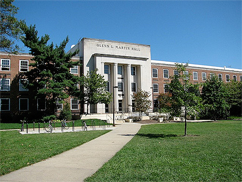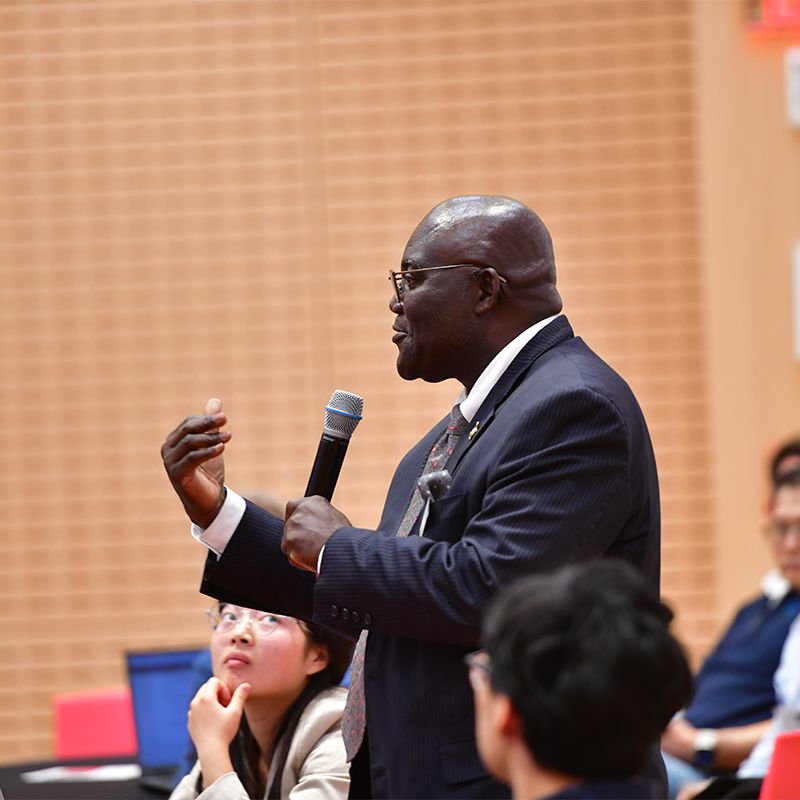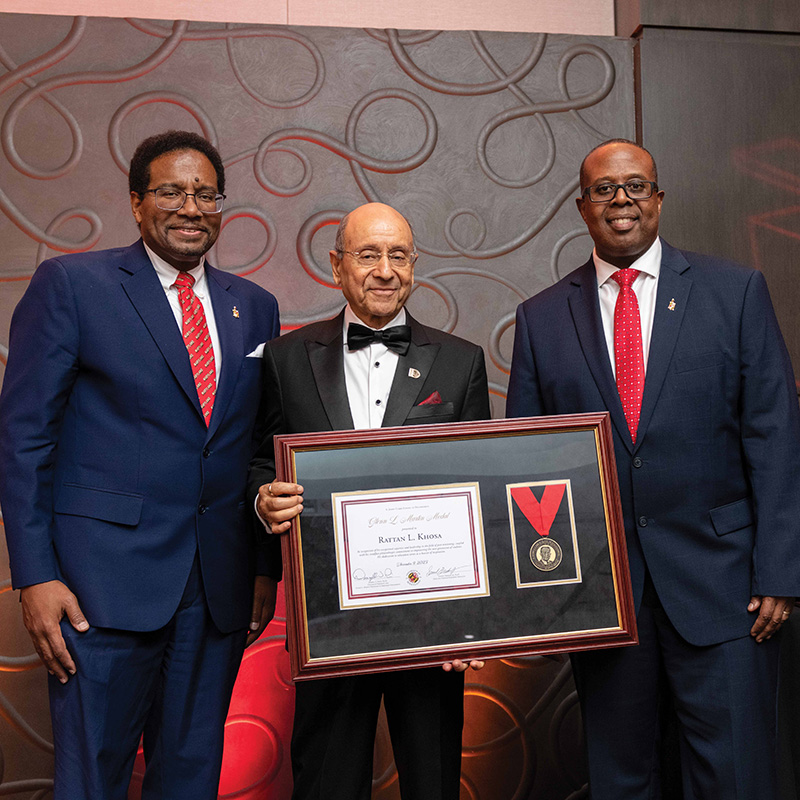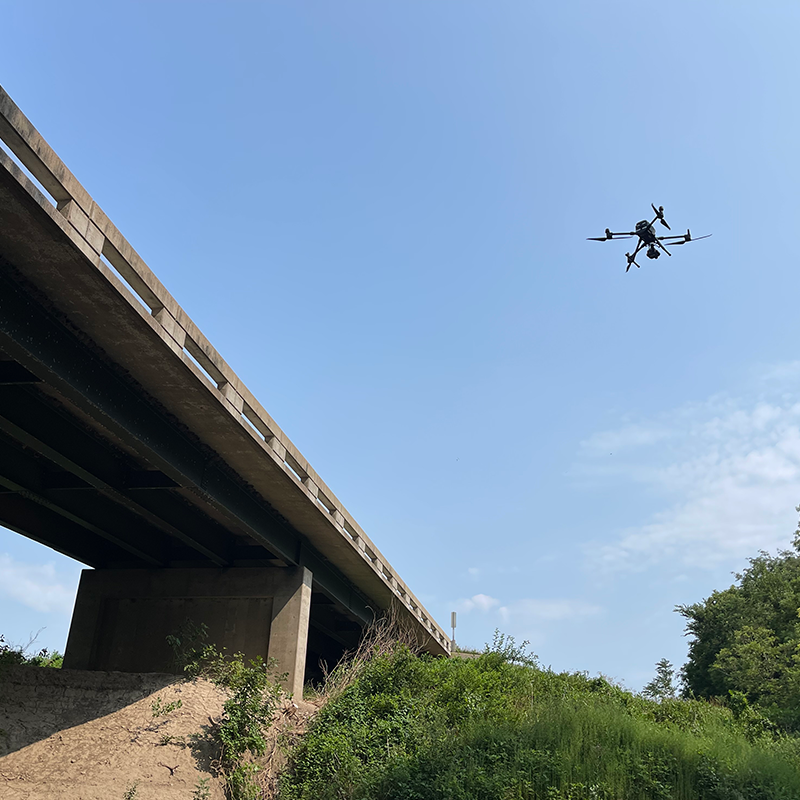News Story
UMD Civil and Environmental Engineering in Top 20

Civil and environmental engineering (CEE) graduate programs at the University of Maryland (UMD) rank in the top 20 among public universities across the nation, according to the latest U.S. News & World Report (USNWR) rankings.
The CEE department, based at the A. James Clark School of Engineering, received a ranking of #19 among public universities and #31 overall. This marks a notable advancement from last year’s rankings, with the department climbing four spots among public universities and five spots nationally, after previously holding #23 and #36, respectively.
"Our forward-looking program has been at the forefront in areas such as resilience, sustainability, and advanced technologies," said Nii Attoh-Okine, chair of the CEE department. "Graduate students are drawn to our department by the exceptional quality of our faculty and the opportunities for innovative, impactful research."
The Clark School as a whole continues to soar high in the rankings. For the sixth consecutive year, USNWR placed it among the country’s top 10 public universities in graduate engineering programs.
Research Areas
The CEE department’s strong performance reflects the scope, breadth, and caliber of the research being conducted by its world-class faculty, supported by post-doctoral researchers and students.
With approximately $46 million in annual research expenditures, the department conducts a broad array of projects in eight key areas: civil systems, environmental engineering, resilience, geotechnical and pavements, project management, structures, transportation, and water resources.
Graduate students in the department have the opportunity to work with leading experts and make their own mark on the field. Among other recent projects, doctoral students in the department have conducted first-of-kind research on how EVs affect marginalized communities, helped assess the impact of sea level rise on Maryland’s Eastern Shore, used AI to make intersections safer for pedestrians and bicyclists, experimented with novel pavement mixes for highways, conducted research on railway cybersecurity, created “digital twins” of major urban areas, and assisted transportation agencies in reducing environmental hazards generated by road infrastructure.

Center for Advanced Transportation Technology Laboratory
Centers and Resources
UMD CEE’s centers, institutes, and labs are the heart of graduate education at the department. These facilities include the Center for Disaster Resilience (CDR), led by Clark Distinguished Chair Deb A. Niemeier; the Digital and Cyber Railway Engineering and Operations Center (DCREOC), led by Professor and Chair Nii Attoh-Okine; the Environmental Engineering Laboratories, headed by Professor Allen Davis, Professor Birthe Kjellerup, Assistant Professor Guangbin Li, and Professor Alba Torrents; and the Maryland Transportation Institute, directed by Professor Cinzia Cirillo.
The CDR, which collaborated with Texas A&M University to publish a landmark study on urban flooding, assists communities in developing practical, equitable, and sustainable responses to the threats posed by extreme weather and natural hazards. The DCREOC, launched in 2021, aims to leverage advanced technologies, including AI, in responding to the security and operational challenges that railway systems face in the digital era. The department’s four Environmental engineering labs are dedicated to the study of biofilms, inorganic pollutants, persistent organic pollutants, and resource recovery.
The Maryland Transportation Institute, which specializes in data-driven solutions to problems such as congestion, works closely with state officials and legislators, providing the research support needed for informed policymaking. Among MTI’s affiliate centers is the Center for Advanced Transportation Laboratory, which maintains the world’s largest transportation database, the Regional Integrated Transportation Information System (RITIS).
Also in the area of transportation, A. James Clark Chair Gang-Len Chang is director of the Traffic Operations and Safety Laboratory and manager of the Applied Technology and Traffic Analysis (ATTAP) program, a joint initiative with the Maryland Department of Transportation’s State Highway Administration. Chang and his research team, composed of students and post-doctoral researchers, have developed a strong research portfolio that addresses critical transportation issues for the state and beyond. Their work has yielded significant savings for the state and helped improve transportation safety.
UMD’s CEE department is also helping to spearhead implementation of the Bipartisan Infrastructure Act, a landmark package of legislation adopted by Congress in 2021. The multi-institutional Build America Center, led by Professor Qingbin Cui, provides technical assistance and expertise to state agencies, municipalities, and other stakeholders seeking to launch projects with BIL funding.
Professor Bilal Ayyub and his Center for Technology and Systems Management, meanwhile, have been leading an effort on advancing engineering practices that can help address the challenges posed by a changing climate. Ayyub is the author of an ASCE Manual of Practice on climate-related adaptive design.
The Project Management Center for Excellence, housed at the department, is a national pace-setter, receiving the Distinguished designation from the Project Management Institute. In addition to M.Eng degrees, it offers certificates, an online Master of Professional Studies in Product Management, and undergraduate minors in project and construction project management.
Finally, the department is fortunate to have junior faculty members who are already leaders in their fields. These include Associate Professors Allison Reilly (Sea level change and Climate Migrations), Shelby Bensi (Risk Assessment in Nuclear Plants) and Xianfeng “Terry” Yang (Connected Automated Vehicles).
Education
The CEE department has approximately 113 full-time graduate students working towards a Master of Science or Ph.D. degree. The department has launched an innovative and integrated curriculum to reflect the evolution of civil and environmental engineering. The new curriculum focuses on skills needed not just for the CEE of today but for future needs. The department has a unique Capstone Design program that tackles grand challenges and non-traditional approaches to civil engineering design. The capstone, apart from the traditional civil and environmental concepts, addresses community engagement and societal needs. Clark Distinguished Chair Deb A. Niemeier has been leading this effort.
The department is making Machine Learning (ML) and Artificial Intelligence (AI) part of the curriculum. The majority of courses offered at UMD CEE include ML/AI as part of their coursework. Most students are either familiar with or using AI tools in their classes.
The department has developed an ongoing relationship with various high schools around Prince George’s County in Maryland. The department is involved in both teaching and outreach-based programs with the schools. Most recently, through a partnership with Whiting-Turner, the department has launched an outreach center working in the heart of Baltimore.
Through Maryland Applied Graduate Engineering, students can choose from several CEE-related Master of Engineering (M.Eng) programs related to civil and environmental engineering, including transportation and project management.
"The demand for civil and environmental engineering expertise, as well as for expertise in related areas such as project management, remains strong and will continue to become stronger,” Attoh-Okine said. "The world depends on civil and environmental engineers to help tackle the grand challenges that we face, including the need to adapt to a changing environment and the need to secure our critical infrastructure."
"Through the multiple pathways we offer, our department is helping to ensure a robust pipeline of skilled researchers and professionals who have what it takes to tackle these challenges," he said.
Published June 25, 2024









